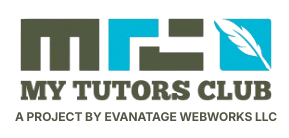Product Pricing Recommendation
Selecting the appropriate product pricing method is crucial as it directly impacts monetary profits and the product’s life cycle. Pricing decisions must be data-driven, considering market competitiveness, shifting customer preferences, and a rapidly evolving business environment (Wu et al., 2021). Achieving this balance allows businesses to align pricing with market trends while remaining profitable. The main objective of this study is to analyze cost accounting systems and pricing strategies used by Acme Pickle Company. By examining these systems, the company can ensure that MBA FPX 5010 Assessment 2 Product Pricing Recommendation aligns with market conditions and supports sustainable growth.
Company’s Overview
Acme Pickle Company, under the brand name “Florida’s Best,” has been in the pickle production business for eight years. Located in Jacksonville, Florida, the company primarily operates in the southeastern United States, benefiting from a strong local customer base. Acme’s dedication to high-quality pickles, crafted from premium cucumbers, spices, and vinegar, sets it apart in the market.
Currently, Acme produces between 8,000 and 10,000 cases of pickles monthly, with the capacity to scale up production to 12,000 cases without increasing resources. This ability to expand, combined with a strong reputation for delivering a crunchy, distinct taste, allows Acme to price its pickles at $20 per case, ensuring profitability and customer satisfaction.
Variable and Fixed Production Costs
Acme Pickle Company’s production costs are divided into variable and fixed costs. Variable costs fluctuate with production levels. For instance, expenses for cucumbers, spices, vinegar, jars, and lids increase as more cases are produced. Labor costs also fall under variable costs, as workers are paid per case produced (Nickolas, 2022).
Fixed costs, on the other hand, remain constant regardless of production volume. These include salaries for line supervisors, factory property taxes, insurance premiums, and equipment depreciation. For instance, the factory property tax must be paid annually, irrespective of how many cases are produced. Identifying and categorizing fixed and variable costs helps Acme make strategic long-term pricing and production decisions.
Benefits of Recalculating the Cost of Pickle Production
Recalculating production costs involves analyzing both variable and fixed costs per case. Variable costs include cucumbers, spices, jars, and labor expenses, divided by the total number of cases produced. Fixed costs, such as salaries, insurance, and taxes, are allocated per case by dividing the total fixed price by the number of cases.
For example, recalculations reveal that Acme’s variable cost per case is approximately $7.33, while fixed cost allocation is about $2.67 for 9,000 cases. This brings the total cost per case to roughly $10.00. Understanding these costs helps the company decide on additional orders, such as the offer from Super Deals, ensuring profitability.
Benefits to Acme Pickle Company
Understanding marginal costs allows Acme to make smarter decisions when evaluating special orders. For example, Super Deals’ offer of $9 per case for an additional 2,000 cases is slightly below the total cost of $10.00 per case but remains profitable when only variable costs are considered. Since the marginal cost of production is $7.33, the additional $9 price still contributes to covering fixed costs, generating incremental profit (Nickolas, 2022).
This strategy allows Acme to optimize production without compromising financial stability. By distinguishing controllable and uncontrollable costs, the company can focus on reducing expenses during low-demand periods, such as cutting advertising costs or lowering production volume. Proper cost management ensures efficient resource allocation and prevents overspending.
Financial vs. Managerial Accounting of Production Costs
Financial and managerial accounting serve different purposes within a business. Financial accounting is primarily for external stakeholders, such as investors and regulatory agencies, and ensures compliance with Generally Accepted Accounting Principles (GAAP). For instance, Acme’s financial records might group costs under “cost of sales” without distinguishing between fixed and variable costs (Warren et al., 2020).
MBA FPX 5010 Assessment 2 Product Pricing Recommendation
In contrast, managerial accounting is tailored for internal management. It provides detailed insights into production costs, differentiating between variable costs (like materials and labor) and fixed costs (like depreciation and insurance). Techniques like Activity-Based Costing (ABC) are used to analyze costs effectively and determine appropriate pricing strategies. Managerial accounting helps Acme identify profitable products and promotional strategies, such as the Super Deals offer, and optimize decision-making for long-term success.
While financial accounting ensures transparency and consistency for external stakeholders, managerial accounting focuses on providing actionable insights for internal operations. Together, these approaches allow Acme to effectively balance compliance and strategic planning.
Recommended Plan of Action
Based on the recalculated production costs, Acme Pickle Company should accept Super Deals’ offer of $9 per case for 2,000 cases. With a variable cost of $7.33 per case, the $9 selling price generates a contribution margin of $1.67 per case. This additional revenue of $19,000 will partially offset fixed costs and increase overall profitability.
Furthermore, this order presents opportunities to expand into new markets, such as Wisconsin, paving the way for higher sales volume and economies of scale. Acme can improve profit margins and maintain financial stability by strategically managing variable and fixed costs.
Conclusion
In conclusion, the analysis of Acme Pickle Company’s production costs supports the decision to accept Super Deals’ offer. The contribution margin analysis highlights that even discounted orders can positively impact fixed cost coverage and profitability. Expanding into new markets and strategically managing costs will enable Acme to capitalize on growth opportunities while maintaining competitive pricing.
This case demonstrates the importance of accurate pricing strategies and cost management in achieving business success. By focusing on fixed and variable costs, Acme Pickle Company can make informed decisions aligning with its long-term goals. For district managers or professionals working on MBA FPX 5010 Assessment 2, this approach underscores the value of cost recalculations and strategic planning in real-world business scenarios.
Read more MBA FPX 5010 Assessment 1 Training-Accounting Tools and Practices about for complete information about this class.
References
Capella University. (n.d.). RN to BSN | online bachelor’s degree | Capella University.
Nickolas, S. (2022, July 10). Variable cost vs. fixed cost: What is the difference? Investopedia.
Tuovila, A. (2023, October 10). Managerial accounting. Investopedia.
Vipond, T. (2019). Fixed and variable costs. Corporate Finance Institute.
Warren, C. S., Jones, J. P., & Tayler, W. B. (2020). Financial and managerial accounting. Trang Chủ.
Wu, M., Ran, Y., & Zhu, S. X. (2021). Optimal pricing strategy: How to sell to strategic consumers? International Journal of Production Economics, 244, 108367. ScienceDirect.




